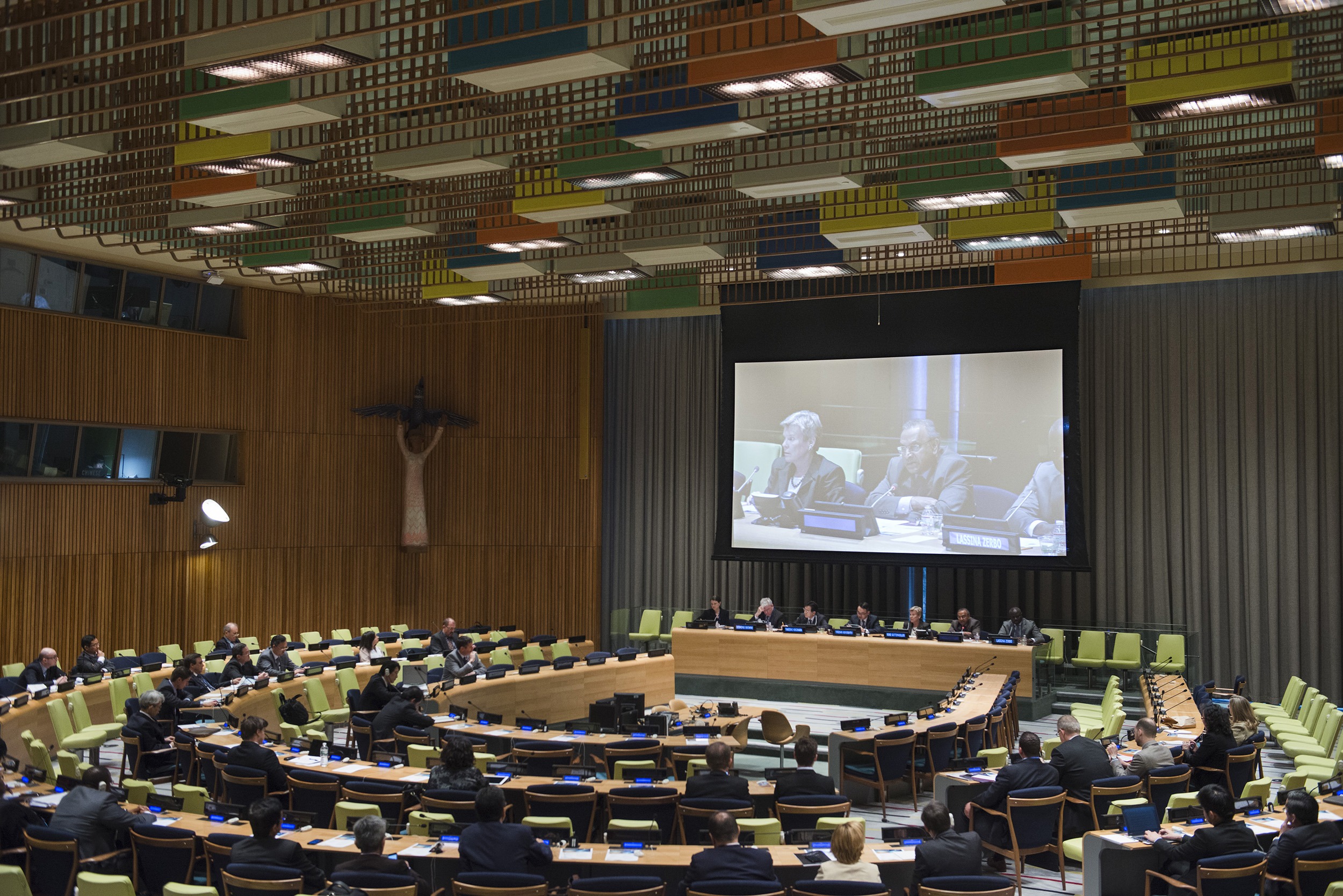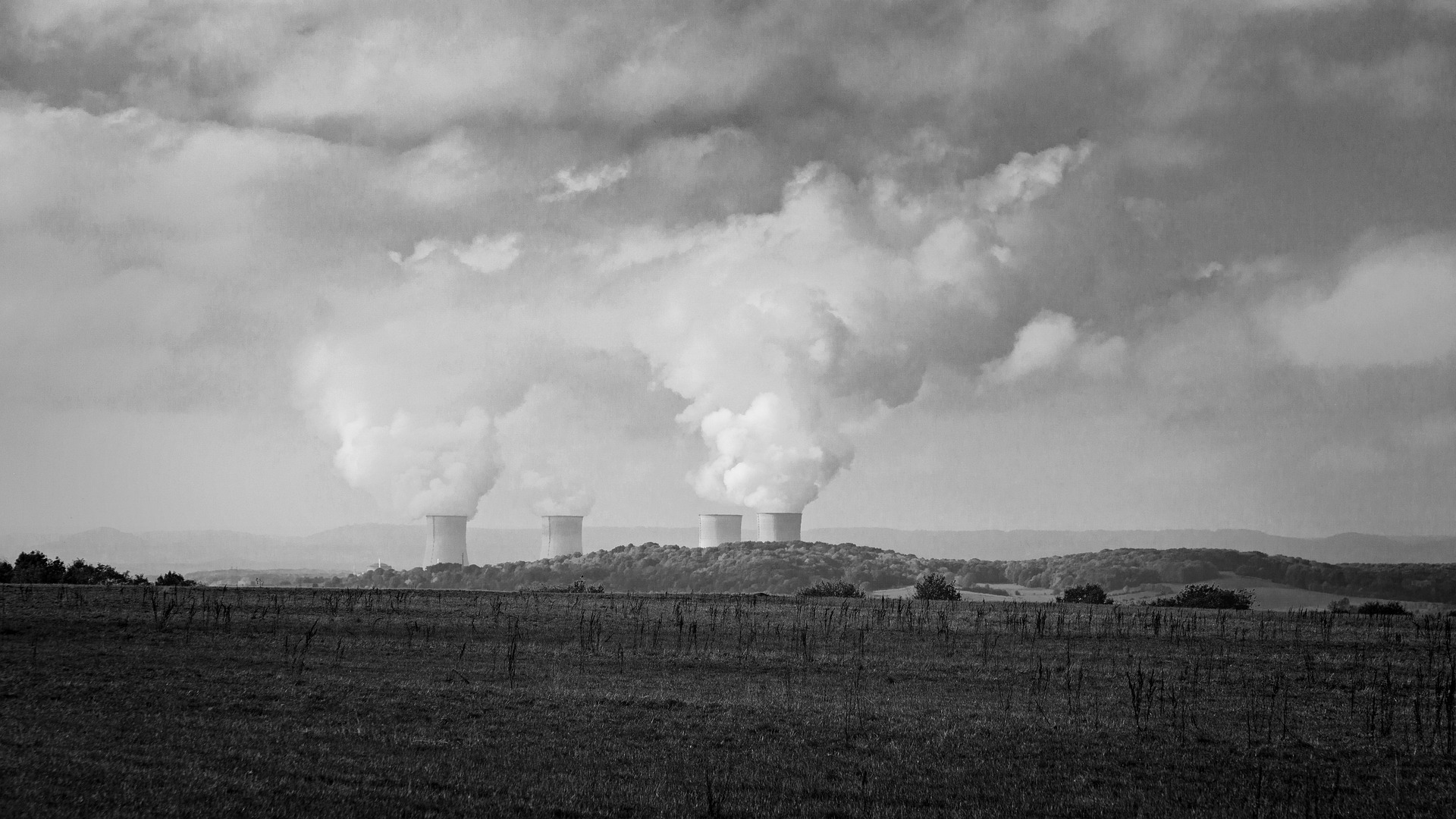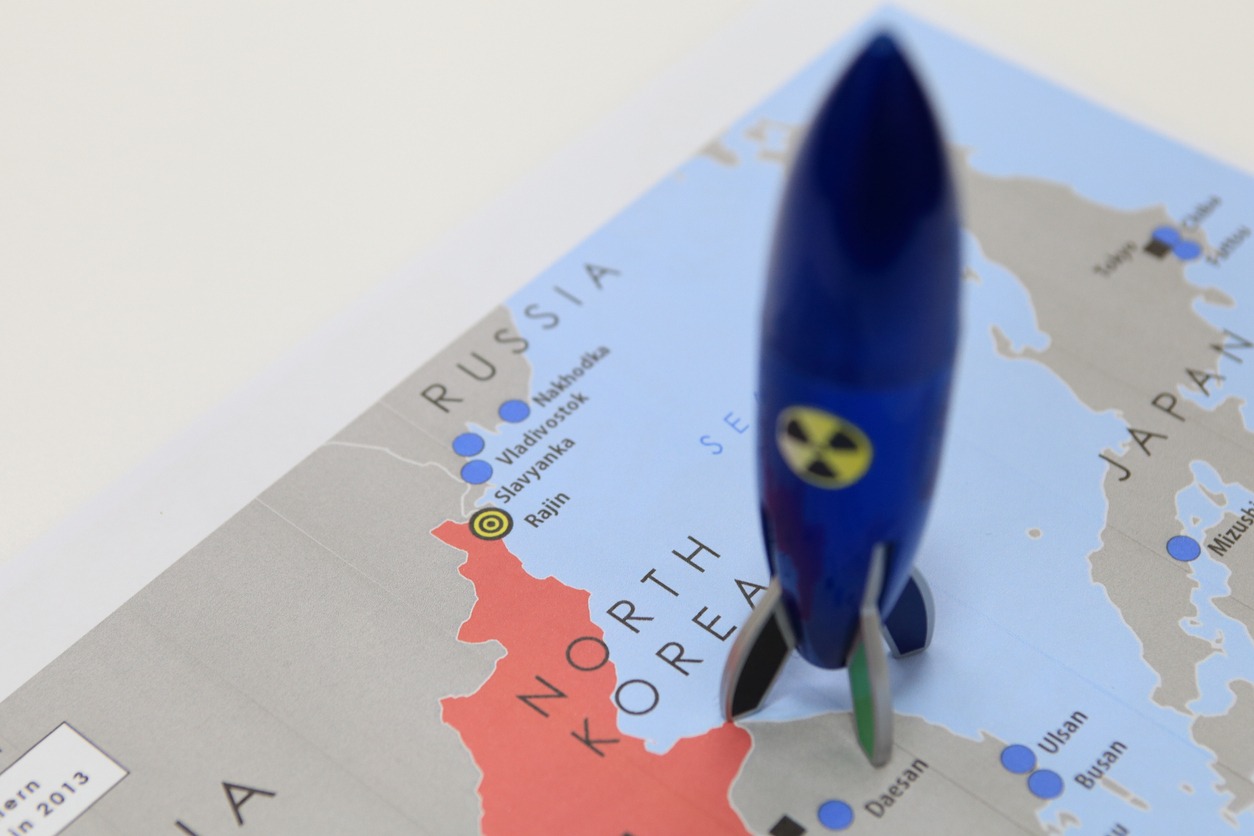Future of the NPT
*Please download the PDF file on the left to read the report.
Critics have asserted that the 2015 NPT Review Conference ‘failed’, but how damaging was that outcome? Three previous review conferences failed to agree on a substantive final review document. The DPRK challenge remains unresolved but the Iran challenge has been averted/delayed and the NPT was invaluable in achieving the deal. The absence of progress on Article VI continues to be damaging to the NPT’s credibility but the non-proliferation and peaceful uses under international safeguards norms remain powerful. We cannot be complacent: new ideas are needed for maintaining and strengthening the NPT and supporting counter-proliferation arrangements – both regionally and globally.
Moderator:
Ramesh Thakur (Co-convener, APLN / former assistant Secretary-General of the UN)
Presenters:
Jayantha Dhanapala (President, Pugwash Conference on Science & World Affairs)
Rakesh Sood (former Ambassador for Disarmament and Non-proliferation, India)
Marty Natalegawa (former Foreign Minister of Indonesia)
Sha Zukang (Former UN Under-Secretary General for Economic & Social Affairs)
*All presenters and moderator are APLN members.
Professor Ramesh Thakur (Co-Convenor, APLN):
The Non-Proliferation Treaty has been the most effective system on nuclear non-proliferation. Today, there is only one digit of countries with nuclear weapons; the treaty has contributed on the peaceful usage of the power. However, the five nuclear powers with NPT approval are not stepping forward to push forward nuclear disarmament. The progress of non-proliferation is slow. It is even not cost-efficient. Israel, India, Pakistan and some other nations have confirmed that they possess nuclear weapons since the nuclear experiment in 1998. The normative control of NPT is no good to those who are not the members of the treaty; DPRK, for example, has even quit the treaty after joining. NPT lacks the ability of administration and supervision since it has no standing organization. This role is instead executed by the review conferences that are held every 5 years. The conferences have been succeeding and failing by turns, and that of the last year was rather a failure. Does it mean that we have to accept the fact that NPT cannot afford to reinforce actual disarmament after all? We would like to listen to our panels about this political difficulty that we are facing. President Dhanapala will talk about the relationship between the UN and the NPT.
President Jayantha Dhanapala (Pugwash Conference on Science & World Affairs):
Professor Steve Miller of Harvard University has evaluated the NPT as schizophrenic. The psychology of the international society is complicated and hard to cure. The United Nations is only available for harmonizing the efforts of individual nations as directly involved actors to register and carry through the treaties on which they agree. These treaties never belong to the UN. It should be considered that the NPT was established during the Cold War era under which the US and the USSR was in an acute tension, and therefore built favourable to those who possessed nuclear weapons. In that regard, the contribution that the NPT has made so far is remarkable. There are 189 members and regular review conferences in every 5 years. The treaty has been valid for 25 years and most of the member states have agreed to extend the period sine die without voting.
There are three principles to understand the NPT: non-proliferation, disarmament, and the peaceful use of nuclear power. There was a disagreement on the priority of these principles between those who possessed nuclear power and those who did not. Non-nuclear states called for disarmament while nuclear holders preferred the peaceful use of the power. The UN was the mere agora for the actors’ discussions and debates, not the official manager in charge. There was an occasion that the UN stepped in for action. In the review conference 2010, the UN was asked to act to free the Middle East region from WMD. It was included in the agreement to unlimited extension of NPT period. The conference was going to be held in Helsinki, Finland. But it was broken down since Israel finally decided not to participate. The members of the treaty were deeply disappointed. Then in 2015, the review conference showed no progress in nuclear disarmament and the Middle East Issue was delayed as well. If this condition continues, the next conference in 2020 is unlikely to success. The Middle East crisis is not the problem to be solved in a short term.
Thakur: Indonesia, a country demanding nuclear regulation, is the only G20 member state among ASEAN members. Indonesia has therefore pushed forward this issue on behalf of the ASEAN.
Marty Natalegawa (former Foreign Minister of Indonesia):
Indonesia has actively engaged in many methods for the implementation of the NPT with a clear purpose in ASEAN, G20, and Non-Aligned Movement. Considering the fact that the NPT Review Conference is locked in an impasse, this agenda should be pursued in multiple approaches. Indonesia does not represent all member states of the ASEAN and there are many varied interests entangled in disarmament and nonproliferation. While this ambassador had tried to achieve denuclearization in Southeast Asia, it was not fullfilled within his term.
Momentum is important. While it is traditionally right that the NPT Review Conference should be at the heart of the debate, there is a need to mobilize other available means in the lethargic situation today. The CTBT ratification has become one such point of transition.
Finally, the UN is a functional actor that promotes more talks. However, pointing out the example regarding climate change, the UN actively publicized the issue and succeeded in improving public awareness. There are still areas where the UN could exercise influence. We should not underestimate the role of the UN.
Thakur: India is not a member of the NPT. Does India believe that the NPT’s normative potential has been exhausted? There are some who criticize that India has damaged the NPR framework.
Ambassador Rakesh Sood (former Ambassador for Disarmament and Non-proliferation, India):
India had not always opposed the NPT. For instance, India contributed to the adoption of the first NPT resolution in 1965. However, out of the three principles of the NPT, there was a flaw in the disarmament principle. This principle was vague; it did not apply any temporal conditions or volume limits. That was why India left the NPT. India is not opposed to nuclear nonproliferation and disarmament. For instance, India has worked hard for disarmament through various initiatives. After the ratification of the NPT, India independently declared a gradual reduction of nuclear arms. However, there were nuclear proliferation in neighboring areas of India in 1998. India became a nuclear power because there were threats to the security environment.
Around 5,600 years ago, a king of India had nine wise men. The king drew a line on the floor and told the wise men to make it shorter without erasing the line. The wise men drew a longer line beside it. Such is an alternative for the NPT. The limits of the NPT are widely known. How could the NPT framework be applied to the five nuclear powers under the treaty and the four nuclear powers outside the treaty? For instance, there is no way to handle DPRK within a NPT context. The Resolution ratified last July was also made outside the NPT framework. There is also a way through the IAEA. There should be a recognition that the NPT’s limitation in enforcing its rules against non-member states and search for another solution. We are now living in a world different from the one at the time of NPT negotiations. The heart of the conflict then were US-Russia relations. Now the nuclear problem is moving from Europe and Atlantic Ocean to Asia Pacific. Asia Pacific should set the nuclear norms and lead them to no first use, no use of nuclear weapons, and step-by-step nuclear disarmament.
India does not mean to become a member of the NPT as a nuclear power. It is impossible to change the clause recognizing only states executing nuclear tests before January 1st, 1967 as nuclear powers. The problem has become much more complex as the nuclear issue migrated to Asia Pacific. While the level of danger was high during the Cold War, it was a tension characterized by predictability. There were alliances formed around the two major powers. However, now there is no such thing. If the concerned parties possess a strong political will and reduce nuclear weapons like bio-chemical weapons, India will gladly join this negotiation.
Thakur: What is China’s position concerning the NPT? Among the nine nuclear powers, only India and China have based their strategies according to no first use of nuclear weapons. Is China ready to send its support for a no first use treaty encompassing the international community? China also lies on a unique position in that it is a nuclear power under the NPT. How will China respond to a situation where the NPT may fail and no longer exist?
Ambassador Sha Zukang (Former UN Under-Secretary General for Economic & Social Affairs):
China initially had strong reservations about the NPT before it joined it in 1992. This is because of the NPT’s weaknesses. One of them is that nuclear disarmament is made very general. It is called general complete disarmament. It is open to all sorts of interpretations. China definitely holds the no first use principle. Through economic development and openness, we decided to accept the NPT’s strong points.
The UN is the best intergovernmental organization we could have right now. Even voices of small and poor countries can be heard there. The UN is as good as the member states wish. The UN is for the members, not for the Secretariat.
There was a rousing debate about the extension of the NPT. Indonesia also sent a big delegation. A majority of the member states that participated in the Non-Alignment Movement then jointly supported extending the NPT for an indefinite duration. This ambassador also agreed to an indefinite duration and persuaded the Chinese government to accept it. If there was no NPT, the world would be a much different form. There was progress in all three principles. At least, strategic nukes and the Cold War structure of two major powers have disappeared. From more than 30 countries, more than 339 nuclear reactors will operate until December for peaceful use. Such nuclear power generates 12.5% of the gross generation of power of the world. Despite that, the nuclear disarmament area is unsatisfactory.
I agree on the principle of no first use. I thank the Indian government for adopting no first use. However, China had to keep its silence. China is a member state and nuclear power under the NPT and cannot make a statement recognizing India’s no first use. When the ambassador was in charge during the Cold War, the Chinese government tried to resolve no first use in the five nuclear powers. The U.S., UK, and France disagreed while USSR wanted a bilateral negotiation with China. As such, the negotiations broke down. China executed its first nuclear test on October 16th in the year of 1964. China said they wanted a general and complete nuclear disarmament. The best method is a step-by-step approach. However, people are not satisfied with it. It is not practical to want an immediate ban on nuclear weapons, but China supports it.
India definitely did not violate international law. India is not a member of the NPT. Also, it does not make sense for India’s possession of nuclear weapons to be a violation when the U.S., UK, France, China, and Russia all possess them as well. It is the same case for Pakistan. However, such a decision of the Indian government cannot win anybody’s support. The ambassador had worked in the nuclear disarmament area for 26 years from 1985 when he left India. It was the first time for China to make a Resolution after its position was redeemed in the UN. The Resolution was supported by developing countries such as Mexico, Indonesia, and Sri Lanka. It stated that nuclear powers have unique responsibilities and possess an obligation to a leading role. The two major powers should lead and the others should follow them. China has responsibility as a nuclear power of Asia. While the U.S. does not physically belong to Asia, it exists in the continent as a P5. The ABM treaty was abrogated by a member state, and missile arrangements were expedited. This gave birth to more nuclear weapons.
Dhanapala: It is inevitable to focus on the US-Russia major powers in regards to the topic of nuclear disarmament. They possess 93% of total nuclear weapons. These two countries must start talks for nuclear disarmament. However, when will other countries participate in a multilateral structure? There must be a sense of agreement about the process among the nuclear powers. Non-nuclear powers are disappointed. It would be hard to accomplish a goal if there is no declaration about it. Negotiations for a complete ban of bio-chemical weapons were executed immediately and unconditionally. Similarly, a verifiable treaty for nuclear weapons should go into effect and be implemented.
Question from the floor:
First, China and India are two countries that did not ratify the CTBT. If even one country among the two ratifies it, what is the possibility of it incurring a domino effect of ratification among other countries? Second, what are the panelists’ opinion on the argument that a ban on use of nuclear weapons takes priority before elimination of nuclear weapons?
Thakur: It is not possible in international law for an actor to force a national sovereign state to negotiate when the latter has rejected such attempts. India is pessimistic about the CTBT due to Article XIV. It was met with very negative sentiments by the public as it was received as a strategy for forcing pressure. It would be difficult to see progress in this issue. However, other issues may still have some room for progress. The Geneva Protocol banned the use of bio-chemical weapons. As such, they were not used in World War II. People recognized them because they confirmed chemical weapons being used during the Iran-Iraq War. While it would be beneficial to make a new framework, if such a method was not viable, only step-by-step approach would work.
Sha: Circumstances for bio-chemical and nuclear weapons were different because international law is decided by the strongest actors. Biological and chemical weapons were banned by major powers because they could be made by anyone. On the other hand, major powers made leeway for nuclear weapons because they believed that other countries would be unable to develop them. I also do not agree with the step-by-step approach. However, if immediate ban is not viable, there is no other option. If Article XVI did not exist, only the five nuclear powers would have ratified and implemented it. The P5 could decide amongst themselves. Universality is important. While P5 do not like each other, there was unanimous consent to declare a suspension on nuclear tests. China has never officially stated that it will not ratify if the U.S. also does not ratify. China and the U.S. have good relations, but the latter is more severe to Russia and China, compared to UK and France. As such, negotiations for CTBT become negotiations for the two super powers. The U.S. should solve its ratification issue domestically. It does not matter whether or not another country ratifies it.
Natalegawa: State leaders should make an example that would receive the respect of other countries. Indonesia has limited influence in the international community. As such, it tries to encourage positive effects in another context. I wish that many countries could strive for a constructive leadership.
Question from the floor:
What do you think about the modernization of U.S. nuclear weapons?
Thakur: It is very regrettable as President Obama had strived for nuclear non-proliferation and disarmament in the early stage of his term. It would be disheartening for him to strengthen the military at the final stage of his term.
Transcribed by Haeun Choi, EAF Fellow



